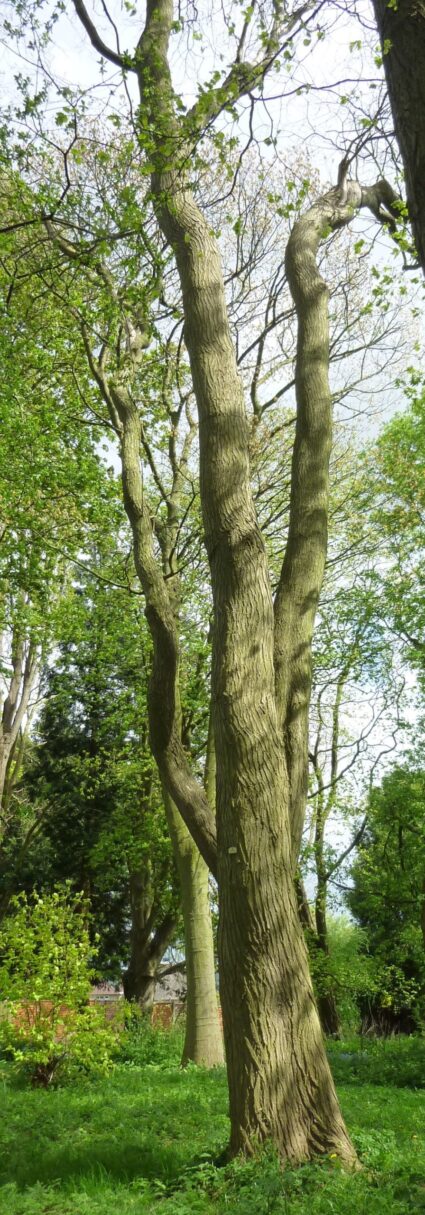#75 PAGODA TREE
Sophora japonica

County Champion
This tree is at the eastern end of the Grass Path, on the south side.
| Distribution: | Native to China, in woods, thickets and dry valleys in mountains. Widely planted in Japan and Korea. Can often be found in the grounds of Buddhist temples. Uncommon in UK but common in warmer countries. |
| Planting Date: | November 1914. Supplied by James Smith (Scotland Nurseries), Tansley, Matlock, Derbyshire. |
| Growth Habit: | Roughly domed on heavy twisting limbs. Big broad tree to 25 m. |
| Bark: | Grey-brown criss-cross ridges. Shoots green. |
| Leaf: | Buds 1 mm hidden in leaf stalks and rimmed by leaf scales. Leaves composite to 25 cm, comprising 9-15 finely pointed, untoothed 3 cm to 6 cm leaflets. Sometimes turning yellow in Autumn. |
| Flowers: | On older trees, after a hot summer. White, pea-like flowers, in large branching heads. |
| Fruit: | Pods to 8 cm, but rare in UK. |
| Tree size in 2023: | Height 22 m and girth: 229 cm at 1 m height |
| Uses: | In China: the buds, flowers and fruit pods are used to clear fevers, stop bleeding, and control dizziness. Flowers used to treat high blood pressure. Pods yield yellow fabric dye. |
| Plant Hunter: | French Jesuit priest, Pierre Nicholas le Cheron D’Incarville, around 1747, gave precious seed to a Russian caravan to carry to Europe. The first seeds were successfully germinated in the Jardin des Plantes in Paris with the first trees appearing in England in 1753. |
| Introduction Date: | Official Introduction to the Royal Botanic Gardens Kew by seed: 1753 |
| Anecdotes and Comments | Original specimen is still living at Royal Botanic Gardens Kew, although largely horizontal and propped on steel supports. Rated County Champion by height and girth in April 2023 by The Tree Register |